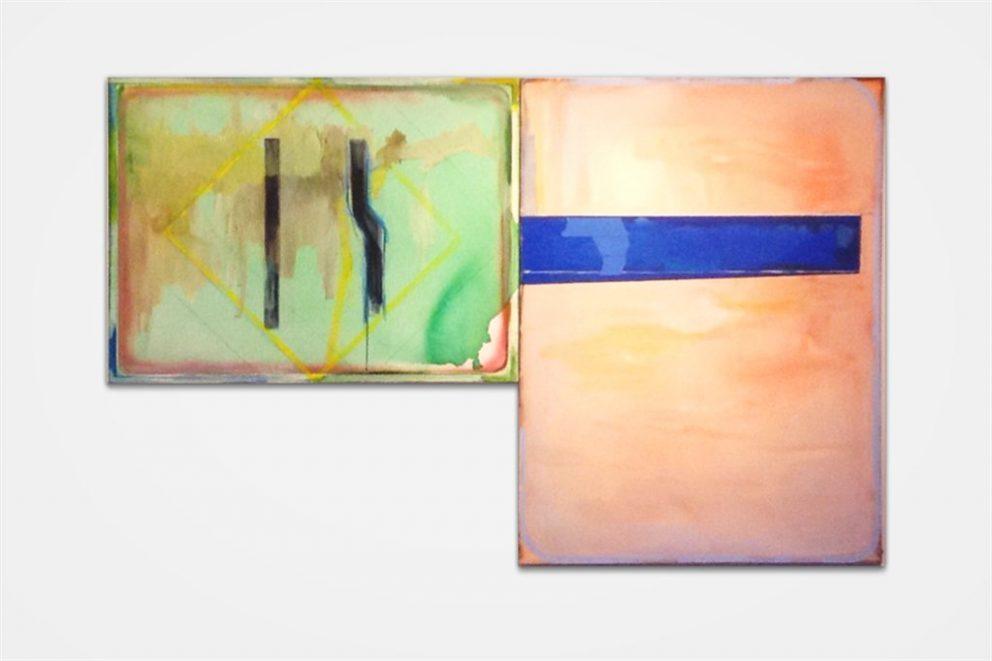
The West Gallery is proud to present Danny Shain’s The Labyrinth and Vicinity, a solo exhibition featuring selected paintings that span several decades. Shain is a visiting artist for Senior Project critiques in the Department of Art & Art History.
Shain often begins a canvas as a field of atmospheric abstraction, which develops into a full experience with layers of color and repeating marks. This additive process of creating a picture allows him to address time and space as a studio painting process and as an abstract narrative framework. On these medium to large canvases, a swath of a landscape formatted space may playfully open up offering a slow meditative view, while other areas of overlapping activity may fracture into diverging perspectives that invite quick, darting glances. Images of roadway signs, motifs from postcards, and Los Angeles architecture seem to filter into the subconsciousness of Shain’s visual lexicon. Like a musical score, with changing tempos and morphing rhythms, a single rectangle can take cues from multiple sources, gain energy as it progresses, and ultimately lead to a new visual place; a place that draws inspiration from travel mementos and the intersection of natural and urban landscapes.
Shain writes: “In the nineties, I made these paintings that were constructions of individual panels that were all painted apart from one another and later bolted together in a final configuration. It gave me a freedom to treat each separate panel as a field of color and texture and surface. I didn’t think too much about composition or even about any of the panels I painted before or after. At some point, I would take these panels and play with their arrangements on the studio floor and find a configuration I liked. In splitting my working method this way, I would find unexpected relationships and convergences that I would never have predicted. The combining of the panels created an intersection, a physical and actualized relationship that mirrored the metaphorical idea of intersection, which was the underlying notion of the work…
I am excited by the way the physical part of it reacts to the painted and seen part of it. The painted spaces were made at a certain point in time, and it was resolved as a painting and considered finished. I went through that same process again for the next painting and another one after that. Now, years later, I am taking the results of that and putting them together toward a new whole and those “things” are physical. They have weight and endured the passage of time and when I put them together now…they collide and combine in unexpected ways. It’s as if they have stored energy, as things and as images, and when they are fused together, they radiate then something new.”